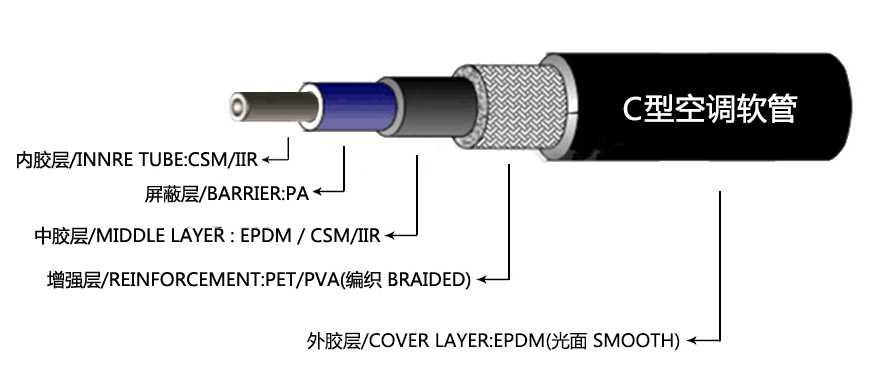Understanding the Benefits and Uses of AC Hose Pipes in HVAC Systems
The Versatility of AC Hose Pipes A Comprehensive Overview
Air conditioning systems are essential for maintaining comfortable indoor climates, especially in regions with extreme temperatures. Among the many components that contribute to the efficiency and effectiveness of HVAC systems, AC hose pipes play a crucial role. These flexible conduits are pivotal in transporting refrigerants and ensuring that air conditioning units operate smoothly. This article explores the significance, types, and applications of AC hose pipes, underscoring their role in modern cooling solutions.
What is an AC Hose Pipe?
An AC hose pipe, often referred to as a refrigerant line, is specifically designed to carry refrigerant between the indoor and outdoor units of an air conditioning system. These hoses are typically made of strong, durable materials like rubber or reinforced plastics to withstand high pressures and varying temperatures. AC hose pipes must also provide insulation to prevent energy loss and protect the refrigerant from external environmental factors.
Types of AC Hose Pipes
There are primarily two types of AC hose pipes suction lines and discharge lines
.1. Suction Line This pipe carries low-pressure vapor refrigerant from the evaporator coil in the indoor unit to the compressor in the outdoor unit. It is crucial for maintaining the overall efficiency of the cooling process, as it helps in absorbing heat from the indoor air.
2. Discharge Line In contrast, the discharge line carries high-pressure refrigerant gas from the compressor back to the condenser. This line is responsible for releasing heat absorbed from the indoor environment to the outside, thereby completing the cycle of air conditioning.
ac hose pipe

Both lines must be insulated properly to prevent loss of cooling efficiency. Failure to do so can result in increased energy consumption and reduced system performance.
Importance in HVAC Systems
The efficiency of an AC unit significantly depends on the quality and condition of the hose pipes. Over time, hoses can wear out, leading to leaks or blockages. Regular maintenance checks are necessary to ensure that the pipes remain in good condition. Damage to AC hose pipes can not only affect system performance but can also lead to costly repairs and increased energy bills.
Applications Beyond Residential Use
While AC hose pipes are primarily associated with residential air conditioning systems, their applications extend to various industries. In commercial settings, such as large office buildings, shopping malls, and industrial sites, efficient temperature control is vital. Properly installed and maintained AC hose pipes contribute to effective climate regulation in these spaces.
Furthermore, AC hose pipes are also used in automotive air conditioning systems, refrigeration units, and other cooling applications. Their versatility and necessity make them indispensable in today's climate-controlled world.
Conclusion
In conclusion, AC hose pipes are a fundamental component of air conditioning systems, playing a vital role in the transfer of refrigerants. Understanding their types, importance, and applications can help homeowners and industry professionals alike appreciate the necessity of maintaining these crucial pipes. With regular inspections and maintenance, AC hose pipes can ensure efficient operation and comfortable indoor environments, contributing significantly to energy savings and system longevity. As the demand for efficient cooling solutions continues to grow, the significance of high-quality AC hose pipes will undoubtedly remain paramount.
-
Ultimate Spiral Protection for Hoses & CablesNewsJun.26,2025
-
The Ultimate Quick-Connect Solutions for Every NeedNewsJun.26,2025
-
SAE J1401 Brake Hose: Reliable Choice for Safe BrakingNewsJun.26,2025
-
Reliable J2064 A/C Hoses for Real-World Cooling NeedsNewsJun.26,2025
-
Heavy-Duty Sewer Jetting Hoses Built to LastNewsJun.26,2025
-
Fix Power Steering Tube Leaks Fast – Durable & Affordable SolutionNewsJun.26,2025

